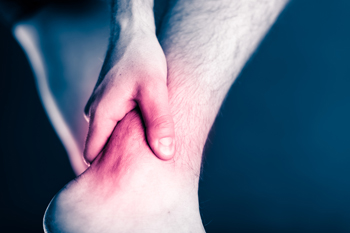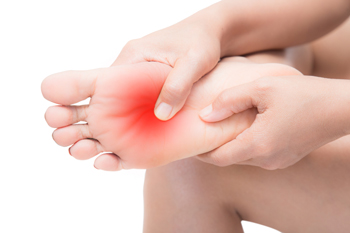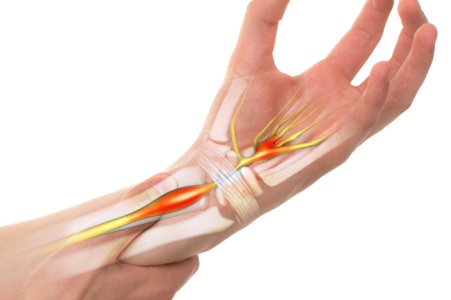
Ankle pain can come from many causes, including joint misalignment, soft tissue strain, or nerve irritation that affects how the foot and leg move. Common types of ankle pain include sprain-related pain, arthritis pain, tendon pain, and nerve-related pain that may cause tingling or weakness. Symptoms include swelling, stiffness, aching, or difficulty bearing weight on the foot. When the joints in the ankle or spine are not aligned properly, it can change the way pressure is distributed through the legs and feet, leading to discomfort and instability. A chiropractor can help by improving joint alignment and reducing stress on the surrounding muscles and nerves. This may help restore better movement and reduce pain throughout the ankle and lower body. If ankle pain is affecting how you walk or move each day, it is suggested that you schedule a visit with a chiropractor, who can help you to improve balance, comfort, and mobility.
Ankle pain is a common problem that can significantly disrupt daily life, often stemming from injuries, overuse, or underlying conditions like arthritis. Sprains, where ligaments are overstretched or torn, are among the most frequent causes, leading to swelling, stiffness, and difficulty bearing weight. Overuse injuries such as tendonitis, caused by repetitive strain, can create persistent discomfort, while misalignment in the joint or biomechanical imbalances in the foot or leg may contribute to chronic pain.
If left untreated, these issues can lead to improper healing, reduced mobility, and a higher risk of re-injury.
Addressing the underlying cause is critical for restoring function and preventing long-term complications. Chiropractic care offers a natural approach to managing ankle pain, focusing on improving alignment, mobility, and overall function while supporting recovery through targeted therapies and exercises.
1. Will chiropractic treatment for ankle pain hurt?
Chiropractic treatments are designed to be gentle and tailored to each patient's comfort level. Adjustments and therapies are performed carefully to avoid causing pain, even in sensitive or swollen areas. Most patients report feeling relief and improved mobility after treatment, although some individuals may experience mild soreness, similar to the feeling after a workout, as the body adjusts.
2. How long does it take to see results from chiropractic care for ankle pain?
The timeline for improvement varies depending on the severity and cause of the pain. Some patients experience relief after just a few sessions, while chronic or complex cases may take longer to resolve.
If you have any questions, please feel free to contact our office located in Leicester, MA .

Neuropathy, a condition resulting from nerve damage, often leads to symptoms such as tingling, numbness, and pain, particularly in the extremities. While various factors can contribute to neuropathy, chiropractic care offers a non-invasive approach to managing its symptoms. A chiropractor can assess spinal alignment and nerve function to identify areas where misalignments may be affecting nerve pathways. Through gentle spinal adjustments, a chiropractor aims to alleviate pressure on nerves, reduce inflammation, and improve circulation, which can help relieve neuropathy symptoms. Additionally, chiropractic care may incorporate techniques to enhance nerve mobility and support overall nervous system health. By addressing the underlying structural issues contributing to nerve dysfunction, chiropractic treatment seeks to promote healing and improve quality of life for individuals experiencing neuropathy. If you are experiencing discomfort from neuropathy, it is suggested that you schedule an appointment with a chiropractor to discuss natural treatment options.
Neuropathy
Neuropathy is a condition affecting the peripheral nerves, often resulting in sensations of numbness, tingling, burning, or sharp pain, typically in the hands or feet. This condition can stem from diabetes, infections, physical trauma, or other underlying health issues, disrupting the body’s ability to send and receive signals between the nervous system and various parts of the body. Neuropathy can interfere with daily life, making even simple tasks uncomfortable or painful.
Chiropractic care
Chiropractic care offers a holistic approach to managing neuropathy symptoms by focusing on improving nerve function and reducing pressure on affected nerves. Through gentle adjustments to the spine or other impacted areas, chiropractors aim to relieve nerve compression, potentially alleviating symptoms and supporting healthier nerve pathways.
Some chiropractors may also suggest dietary adjustments and other lifestyle changes to support nerve health and reduce symptoms of neuropathy, encouraging circulation and reducing inflammation around the nerves.
Chiropractic treatment
Chiropractic treatment for neuropathy provides a non-invasive, natural way to address discomfort by focusing on underlying imbalances that contribute to nerve pain. This approach promotes overall nervous system health and may offer relief from neuropathy symptoms, improving patients’ comfort and quality of life.
If you have any questions please feel free to contact our office located in Leicester, MA
Is there a specific duration or number of sessions at which neuropathy improves plateau?
Each case is different, but significant gains often occur within the first few months, with maintenance care recommended for lasting relief.
How can I tell if my progress with chiropractic care is on track for my neuropathy symptoms?
Chiropractors usually track improvements in symptoms like pain, numbness, and mobility, adjusting treatment if necessary.
How does a chiropractor assess which type of neuropathy a patient has and determine if chiropractic care is suitable?
Chiropractors evaluate the type and cause of neuropathy through symptom assessment and may collaborate with other healthcare providers to ensure that chiropractic adjustments are safe and beneficial for the patient.
If you have any questions please feel free to contact our office located in Leicester, MA .

A pinched nerve occurs when surrounding tissues, such as bones, muscles, or ligaments, apply excessive pressure on a nerve, disrupting its function and causing pain, numbness, or weakness. This condition can affect various parts of the body, including the neck, upper back, and limbs. Chiropractic care offers a non-invasive approach to alleviate the discomfort associated with pinched nerves. Through precise spinal adjustments, a chiropractor can reduce nerve compression, restore proper alignment, and improve nerve function. These adjustments help alleviate pain and promote healing by addressing the root cause of the nerve compression. Additionally, chiropractors may provide guidance on posture and ergonomics to prevent further nerve irritation. If you are experiencing discomfort and in need of relief, it is suggested that you schedule an appointment with a chiropractor to discuss natural treatment options.
Pinched Nerve
A pinched nerve occurs when surrounding tissues, such as bones, muscles, or tendons, apply excessive pressure on a nerve. This condition can cause pain, numbness, tingling, or weakness, often in the neck, back, or limbs. Everyday activities, poor posture, or repetitive motions are common triggers. Left untreated, the condition may worsen, leading to chronic discomfort and reduced mobility.
Chiropractors use a hands-on approach to relieve the pressure that causes a pinched nerve. By performing gentle spinal adjustments, they create space for the nerve to function properly, alleviating discomfort. Chiropractic care may also include stretching exercises to improve flexibility and targeted muscle work to reduce surrounding tension. Patients often receive guidance on posture and activity modifications to prevent recurrence. This tailored approach focuses on restoring normal nerve function and improving overall quality of life.
1. Are pinched nerves only caused by spinal issues?
No, they can also result from tight muscles, inflammation, or repetitive strain. Chiropractors address both spinal and muscular causes.
2. How does a chiropractor determine the location of a pinched nerve?
Chiropractors use physical exams, mobility tests, and sometimes imaging studies like X-rays to pinpoint the source of nerve compression.
For additional information, please contact our office located in Leicester, MA .

Carpal tunnel syndrome arises when pressure on the median nerve at the wrist leads to sensations of tingling, numbness, or weakness in the hand and fingers. A chiropractor can help by gently adjusting misalignments in the wrist, elbow, or even the cervical spine. These adjustments aim to improve nerve function along the arm’s pathway. In many cases, subtle shifts in joint position reduce tension on soft tissues and allow freer movement of the nerve, helping restore balance and ease symptoms. This form of care is non-invasive and avoids surgical intervention. Through a careful evaluation, the chiropractor will determine which areas of the upper limb and spine are contributing to the nerve impingement and then guide the treatment to enhance alignment and mobility. With consistent attention to the joints and nerve pathways, discomfort often diminishes, and hand function can recover. If you are experiencing discomfort in your hands or fingers and in need of relief, it is suggested that you make an appointment with a chiropractor to discuss treatment options.
Carpal Tunnel Syndrome
Carpal tunnel syndrome, or CTS, is a condition caused by compression of the median nerve, which runs through the carpal tunnel in the wrist. This tunnel is a narrow passageway surrounded by bones and ligaments, and when it becomes compressed or inflamed, it can put pressure on the nerve. Symptoms of CTS include tingling, numbness, weakness, and pain in the hand and fingers, often making simple tasks difficult and uncomfortable.
Chiropractic care offers a non-invasive approach to managing CTS by addressing alignment and reducing nerve pressure. Chiropractors start by evaluating the wrist, elbow, and even the cervical spine or neck, as misalignments in these areas can contribute to nerve compression in the wrist. Through gentle adjustments, chiropractors can improve the alignment of the wrist and spine, helping to reduce the pressure on the median nerve.
In addition to adjustments, chiropractors may use soft tissue therapy, such as stretching and myofascial release, to reduce inflammation surrounding the wrist and enhance mobility.
Why Consider Chiropractic for CTS?
Chiropractic care can provide lasting relief by targeting the root causes of CTS, reducing pain, and promoting long-term hand and wrist health.
Can Chiropractic Care Address Repetitive Strain as a Cause of CTS?
Chiropractic care can help manage repetitive strain by improving joint alignment and recommending ergonomic adjustments.
If you have any questions, please feel free to contact our office located in Leicester, MA .

